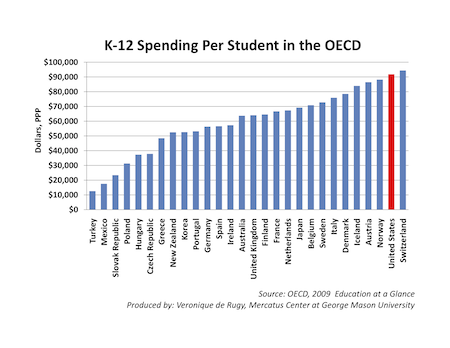fordy said:
Kasz216 said:
It's not... I feel like now you don't know what a derivative is now.
Look at the chart i just showed you.
I feel like you walked into this thread with zero understanding of the thread, looked at the graph and read nothing else.
You are just... wrong and now argueing for argueings sake....
coming up with claims without an actual shred of data to back it up.
Could students be getting dumber? Sure. They also could be getting smarter... making things look worse then that chart.
My money would be on smarter... considering generally IQ tests have to be revised to be made harder generation after generation.
|
The difference between the chart above and the one you showed me was that this chart does indeed work with displacements. As you can see, initial figures START with their initial value, not a value based in the CHANGE of a previous value. I ask the question back to you: do YOU know what a derivative is? I thought you used to work with statistics.
Coming up with claims without an actual shred of data to back it up? Once again, it was YOU displaying the graph, which I have mentioned before, makes a TON of assumptions, and not taking other factors into account. You're preaching the graph like it's some kind of actual gospel fact, and when somebody questions the figures DUE TO EXTERNAL FACTORS NOT TAKEN INTO ACCOUNT ON THIS GRAPH, you decide to start acting like this guy:
|
I did, that's how I know your wrong.
A derivative value has to stay that way the whole way through.
If you look at the two charts, you'll notice, they are exactly the same. The only difference is the labeling. You could eaisly transpose the numbers on the second chart, and replace the percentages on the first chart, and the data would remain exactly the same.
It's not a derivative value. The best arguement you can make is that it's labeled confusingly. It doesn't change how the graph looks in general.
I said you didn't read, because well... you haven't read. External factors have been my point in this entire thread... and I know a lot more about said factors then you do.
If you want to actually come up with an external factor you don't think is covered. Do so. With evidence and facts that actually mentions it. (Like I have... in this thread no less.)
If you can't... what are you trying to argue? May as well argue kids tests scores are stupider because of a magic dumb fairy going house to house making people dumb.
Again, you are just wrong, and argueing just to argue.
If you read the whole thread... one thing you'd of noticed already is that the vast majority of money spent... is spent on employee salaries.



























































